The new “Six Senses Shaharut” in Israel is eagerly awaiting its opening in december 2020: an environmentally friendly luxury resort in the legendary Negev desert, whose architecture reflects local traditions and history.
A place that evokes dreams
Silence, vastness and untouched nature, which has no equal. According to researchers, the Old Testament name נֶגֶב nægæv – New Hebrew “Negev” – goes back to Aramaic roots. And it means “dry land”. More than 2,000 years ago, the Nabataeans invented clever irrigation systems to create habitats in the barren desert. There is no question that this landscape “breathes” history. The new “Six Senses Shaharut” resort, which will soon open its doors in december 2020, treats it with the utmost respect: ecologically built and designed as a reminiscence of early settlements, it blends gently into its biblical surroundings.
An important goal of the Tel Aviv studio Plesner Architects was to architecturally capture the atmosphere of the Negev desert. All parts of the building were set deep into the ground so as not to disturb the “skyline” of the landscape.
Almost all the materials used originate from the region. Walls and roofs were built of local stone. “Green Building” standards were adhered to. It goes without saying that the entire facility is designed for the best possible sustainability.
Mindful luxury
Decisive for the design of the new Six Senses Resort were both the breathtaking beauty and the extraordinary characteristics of the Negev desert. The architecture and interiors were to blend seamlessly into and merge with the surroundings without disturbing the legendary natural area.
The result is impressive. On a hill in the Arava Valley, 60 outward-facing suites and villas with private pools and minimalist, impressive aesthetics were created. Room-high windows direct the view to the outside and reflect local tradition. The flowing form of the weathered ridge and the gentle sand dunes of the desert inspired Daniela Plesner’s design.
We wanted the stones, patterns, textures and colours to be omnipresent, resulting in an architecture that is interwoven with the natural elements.
Daniela Plesner, Plesner Architects
When choosing the materials, architect Daniela Plesner explains that care was taken to complement the natural colours and textures of the landscape. Together with her sister Maya, she has run her father’s studio since his death – the Danish-born company founder Ulrik Plesner. The new hotel complex adds an impressive highlight to the team’s portfolio.
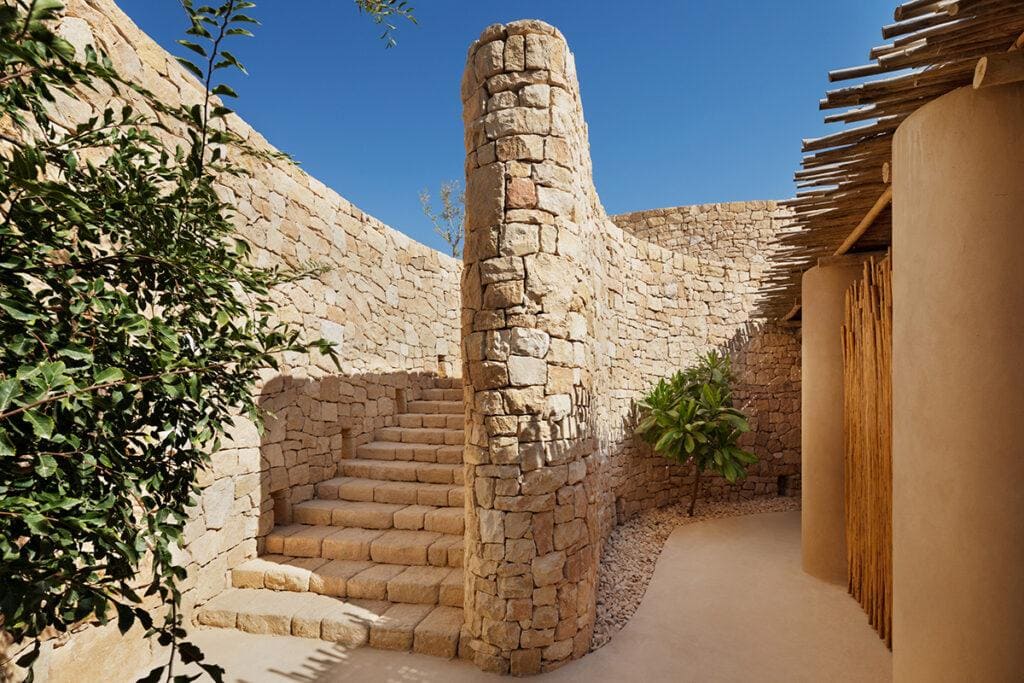
The coarsely hewn limestone and flint were extracted on site. The selection and processing of the stone was based on the goal of ensuring optimal harmony with the environment of the new plant.
Endless vastness, soft light
The design of the Six Senses “Shaharut” was also influenced by the visible roofs, pergolas and concealed systems. The soft, unobtrusive lighting of the low structures also contributes to the seamless integration of the resort into the surrounding nature.
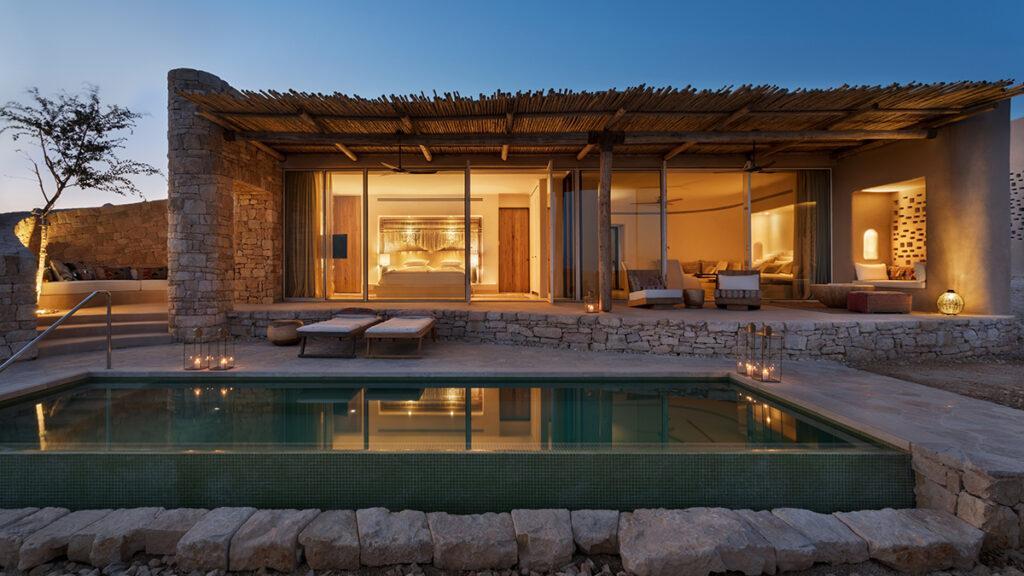
The history of the region also plays an important role in the interior of the new facility: the advantages of the legendary Incense Road – one of the oldest trade routes in the world – were incorporated into the design here. Developed in the middle of the 2nd millennium BC, it led from the Mediterranean ports via the Levant to India and beyond. The brisk trade enriched the local culture. Stylistic elements of this period can now be found in the rooms of the Six Senses Shaharut.
From the very beginning, great importance was attached to involving the resort’s neighbouring communities. For example, the glass fibre reinforced concrete (GRC) for the project was sourced from the Ne’ot Semadar kibbutz, renowned for its ecological products. For the necessary craftsmanship, the architects brought in carpenters, welders, masons and ceramic artists from the region.
Old art, new comfort
All interior walls are made of Tadelakt, a waterproof plaster surface that has been used in Moroccan architecture since ancient times. The furniture and furnishings have been carefully selected and procured. Every detail is designed to match the overall appearance of the Six Senses Resort to the unique weathered rock formations and dunes of the desert.
The exterior and interior of the Six Senses Shaharut merge seamlessly into each other. The architecture creates associations with the era of the semi-nomadic Nabataeans. However, the luxury guaranteed by this resort has absolutely nothing in common with the way of life of ancient tribes.
Desert adventure, “Six Senses” style
Although the rooms look as if they have grown organically over time: they offer all the modern conveniences of first-class hotels. And they convey a feeling of security amidst the sparse, unspoilt natural landscape. An exclusive spa, top wellness and an amphitheatre complete the offer.
Skilfully set colour effects, hand-picked fabrics, pieces of jewellery and works of art break up the reduced style of the interior design and underline the special, exclusive look of the facility.
Committed to environmental protection
Of course – as for example in the no less extraordinary, sustainable “Six Senses on Galapagos” – there is also a typical “Earth Lab” in this resort. There it is presented how the facility contributes to the protection of the local ecosystem and the surrounding communities. The associated camel farm will provide guests with horseback rides in the unique environment.
The Six Senses Shaharut is a new milestone for the brand as it is located in another unique destination.
Manish Puri, General Manager of the Six Senses Shaharut
Resort General Manager Manish Puri stresses that the new opening “perfectly combines the Six Senses philosophy of sustainability, sensitivity to local society and wellness with the desert culture and traditions of the region”. He adds that the guests here will be offered extraordinary experiences with a passionate team. And this “in an environment of truly biblical proportions”.
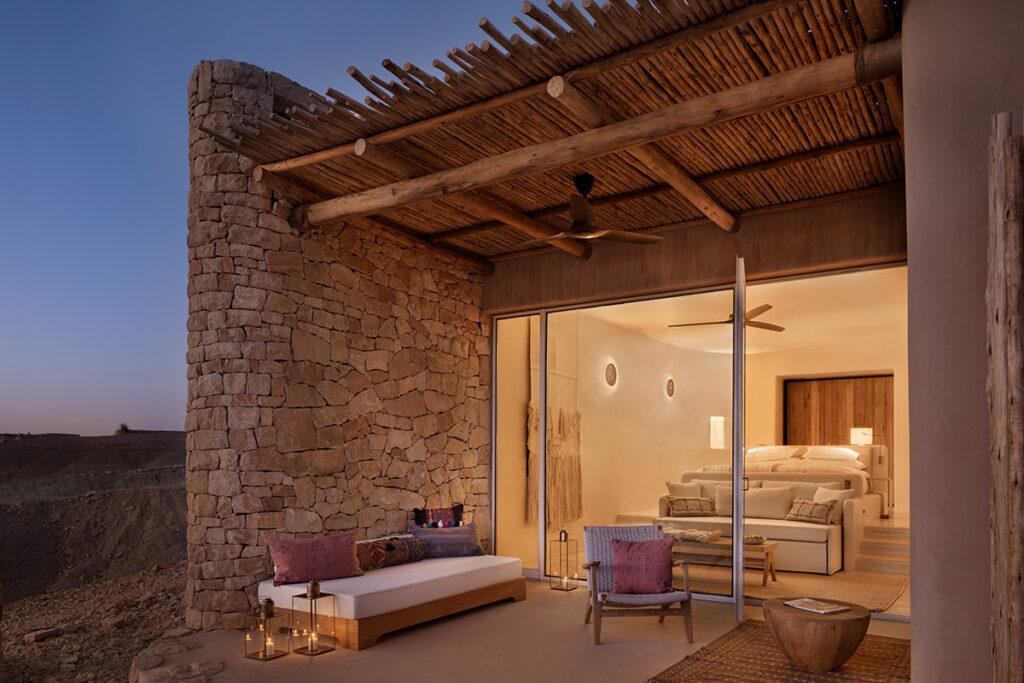
Extraordinary impressions await future guests as soon as they arrive. The transfer from Tel Aviv or Jerusalem takes three and a half hours. From the exhilaratingly beautiful Petra in neighbouring Jordan it takes three. So there is no lack of opportunities for magnificent stopovers.
New airport near Eilat
Less impressive, but quicker would be the alternative: The flight time from Tel Aviv to the new Ramon International Airport (ETM) in Eilat is only 50 minutes, the transfer from there to the resort then another 45 minutes.
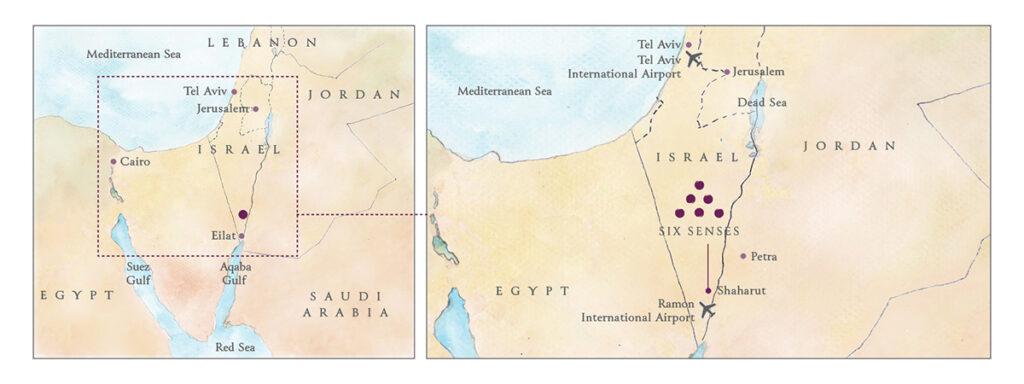
But the highlight is and remains the destination of the journey in any case: A unique, subtly designed oasis of relaxation. In a truly biblical landscape – luxury included.

Text: Elisabeth Schneyder
Photos: Six Senses

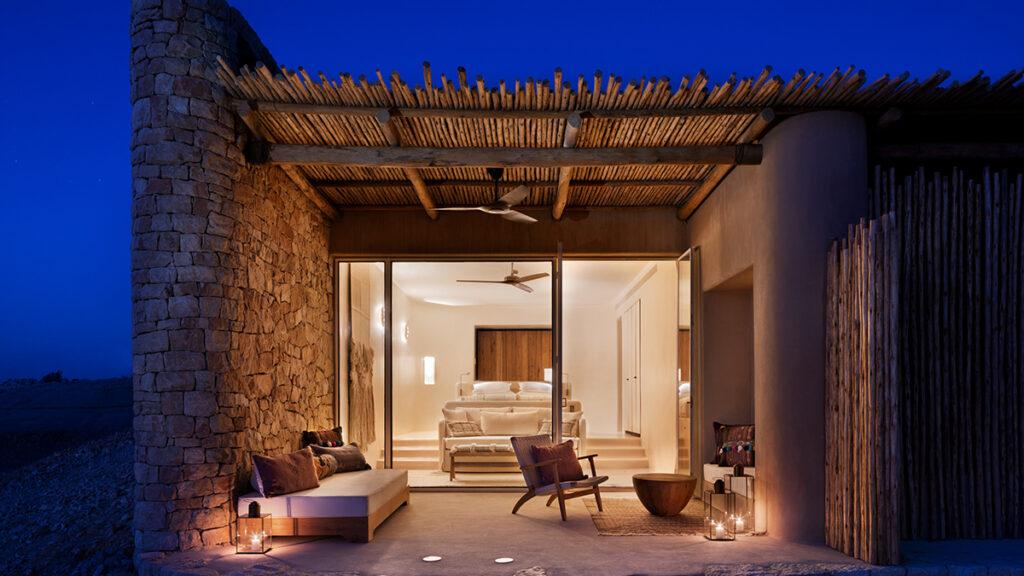
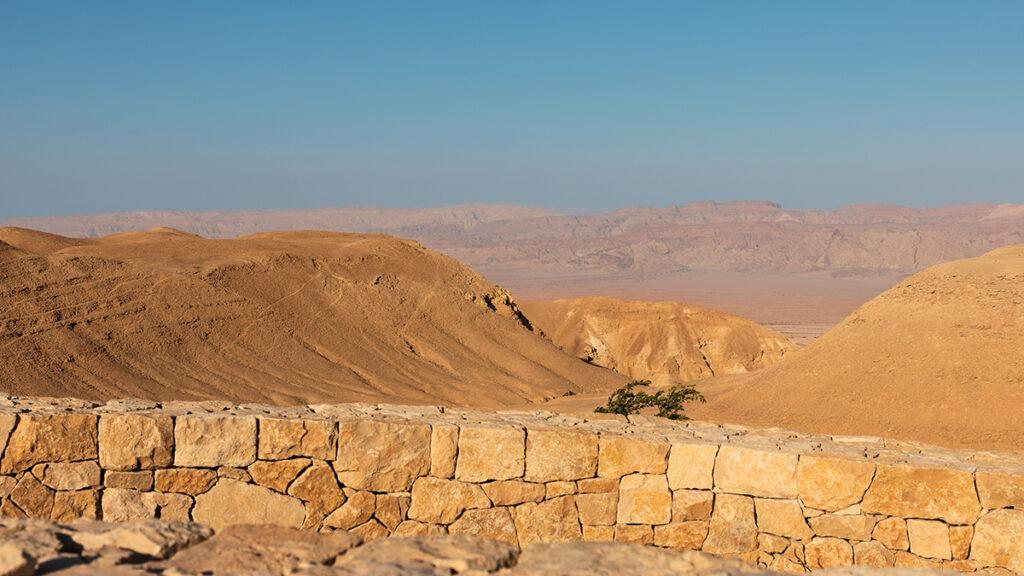
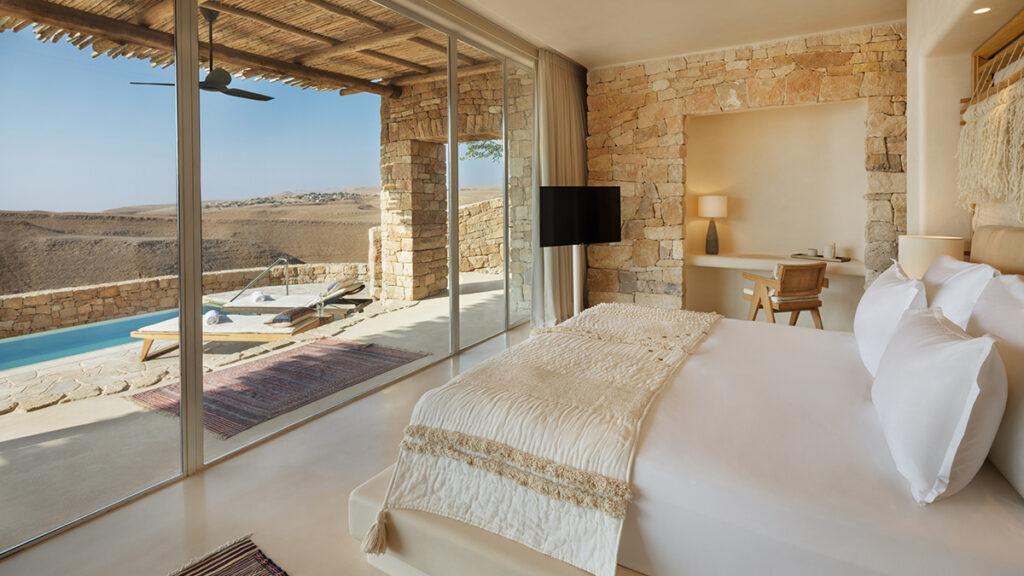
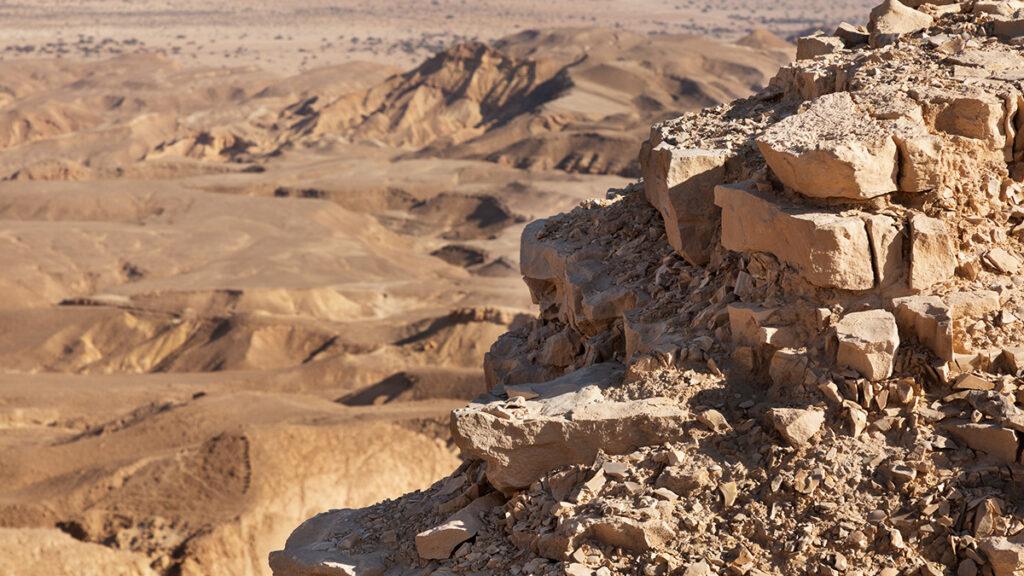
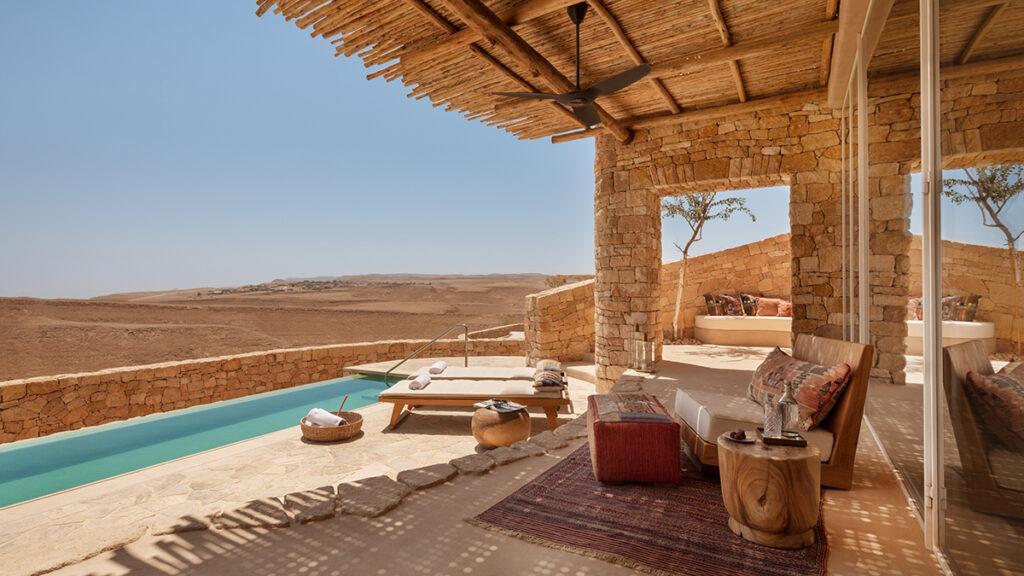
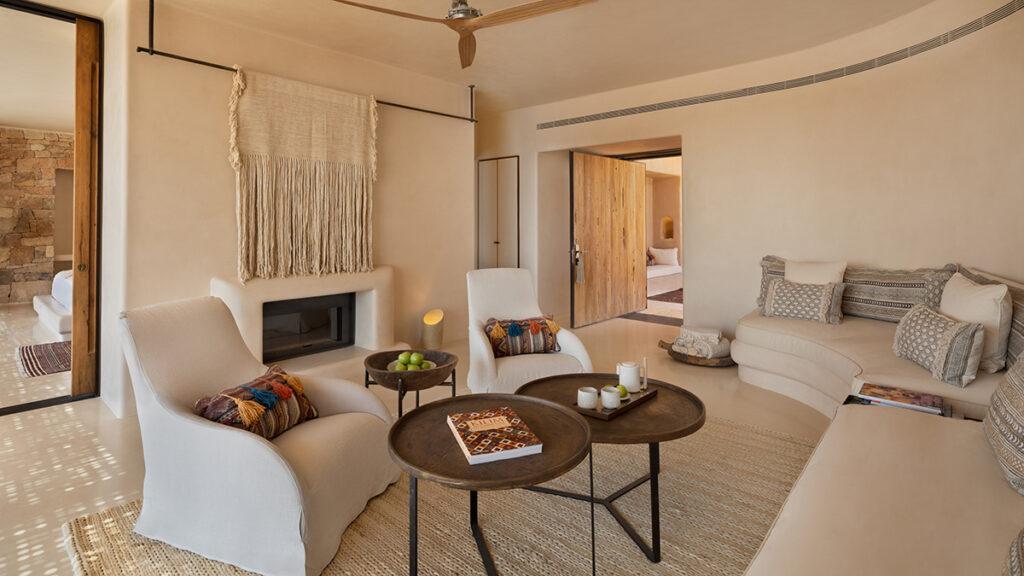
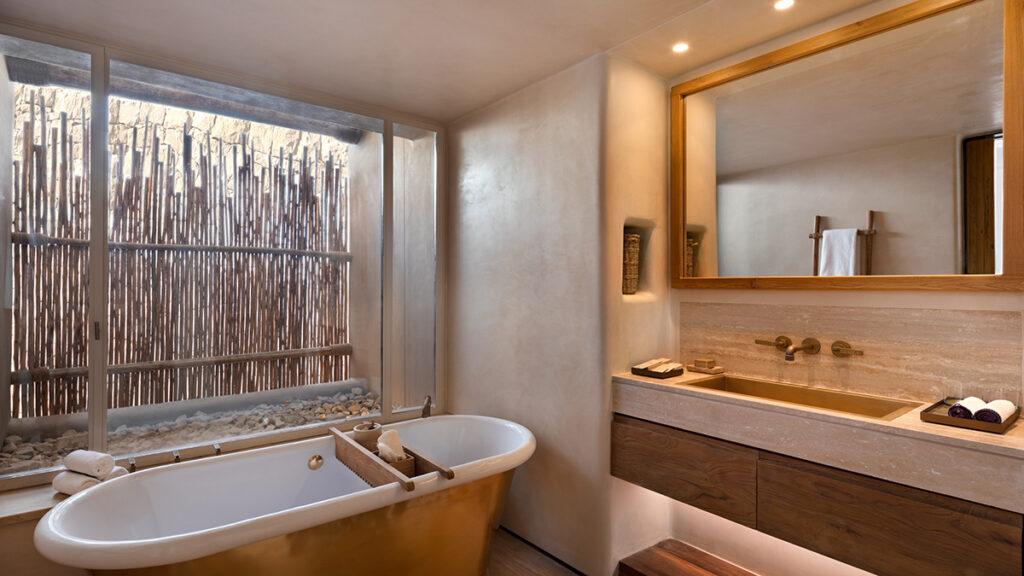
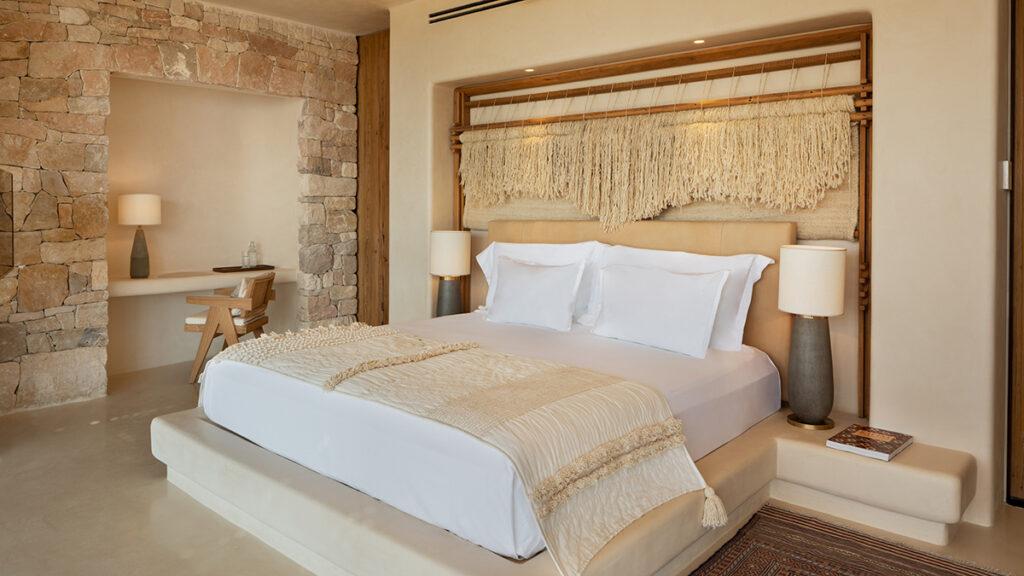
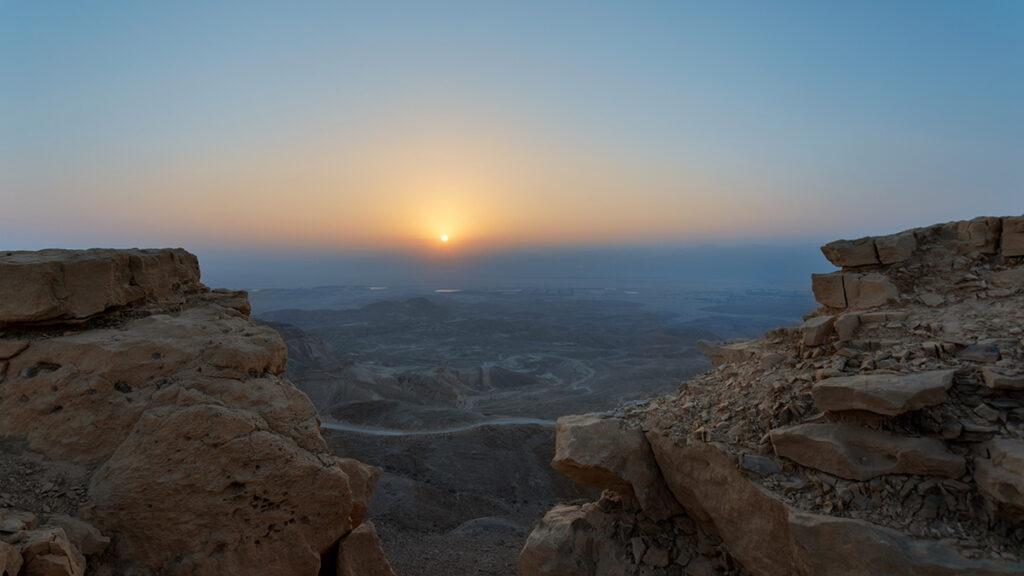
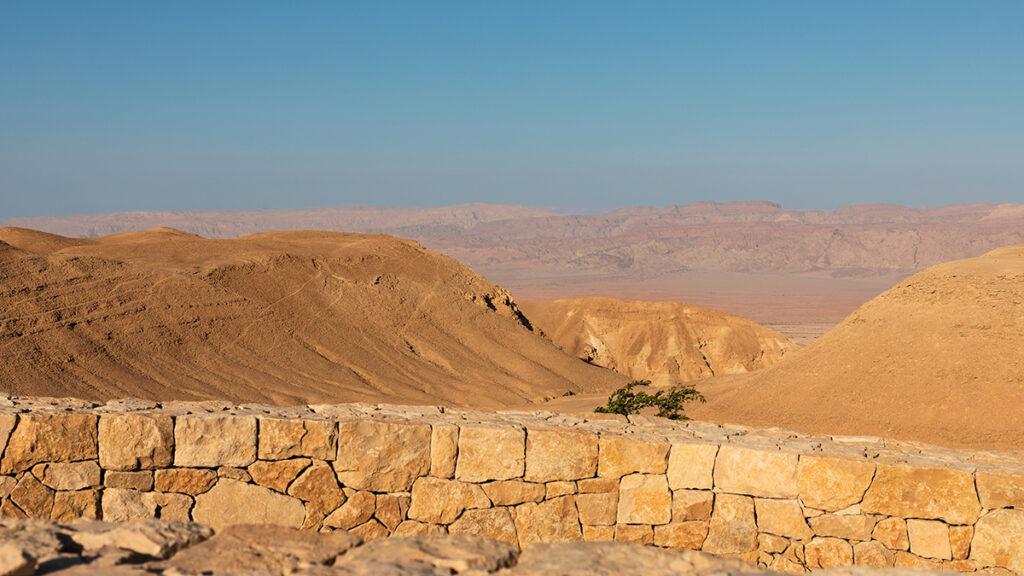
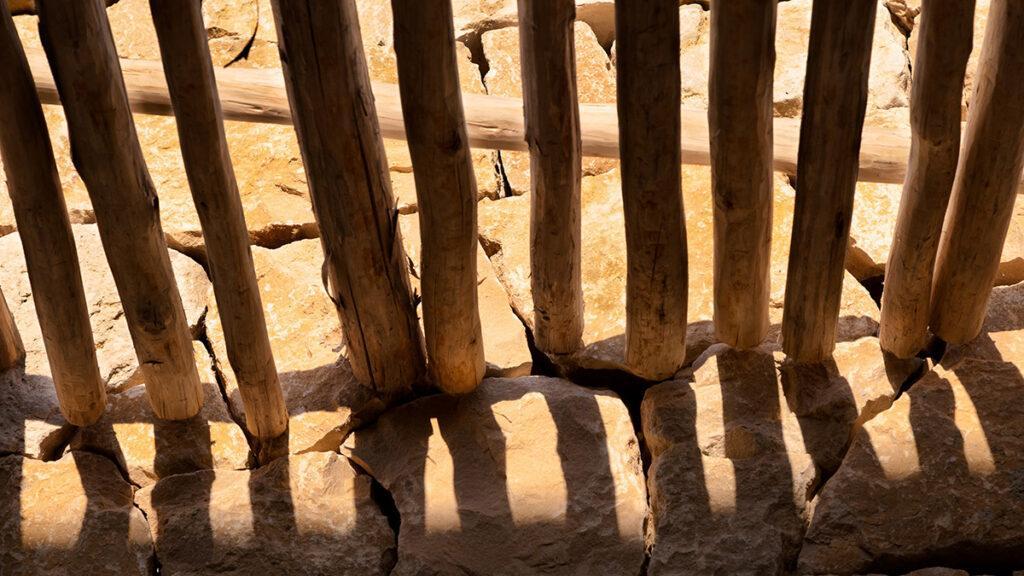
iThere are no comments
Add yours